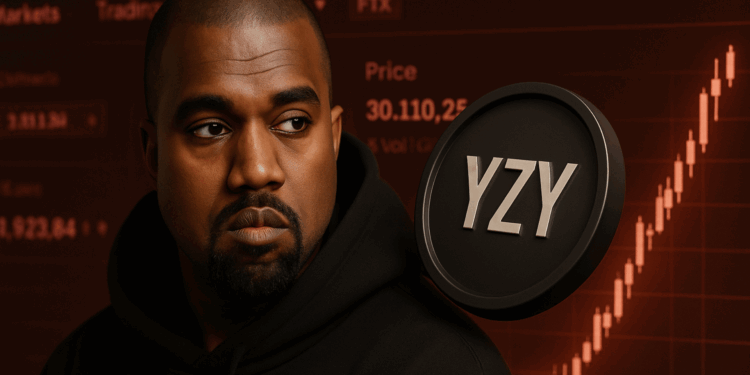- Kanye West’s YZY memecoin soared to $3B in market cap before collapsing 90% in hours, largely due to insider selling.
- Over 15,000 small traders lost money, while insiders and whales walked away with millions in profits.
- The launch adds to a growing list of celebrity memecoin controversies, raising questions about hype-driven crypto projects.
Less than 24 hours after launch, Kanye West’s YZY token has already turned into one of the most chaotic celebrity crypto stories of the year. On August 21, the memecoin briefly touched a staggering $3 billion market cap, only to collapse back to around $300 million within hours. The culprit? Most fingers are pointing toward heavy insider selling, which drove the price below $1 and left retail holders holding the bag.
The numbers tell a pretty grim story. While a handful of whales pocketed life-changing profits, the majority of smaller traders ended up in the red. Data shows that 9,413 wallets managed to gain at least $10, but an even larger 15,999 wallets lost more than $10. In short—regular holders were far more likely to get burned than to benefit, reinforcing the old crypto saying: insiders eat first.
Scandal and Suspicion Around the Launch
The YZY rollout was already murky. West’s official Yeezy Money website described the project as “a new economy, built on-chain,” but behind the hype, the fine print warned investors about risks of “complete loss.” Adding fuel to the fire, Kanye revealed that earlier this year he’d been approached with a $2 million offer to promote a fake Ye token in exchange for pretending his account had been hacked. This new launch, however, doesn’t seem to be a hack—though West deleted his original promotional post not long after the backlash.
On-chain analysts quickly flagged suspicious patterns too. Most of the liquidity was seeded in a way that gave developers flexibility to sell at will, and wallet concentration was heavily skewed. Reports surfaced that 94% of the supply was controlled by insiders, with one multisig wallet alone holding 87% before dispersing the tokens into smaller addresses.
Winners, Losers, and High-Stakes Traders
Despite the chaos, opportunistic traders still piled in. One unlucky investor bought the wrong token and lost $710,000, only to later make it back after buying the real YZY. Another trader dropped $24,000 in priority fees just to front-run others, walking away with $3.4 million in profit. At the top, one whale sat on $6 million in gains before the crash pulled the floor out.
Meanwhile, everyday investors—many of whom saw Kanye’s name and assumed the project was legitimate—absorbed the heaviest losses. It’s a pattern that has played out again and again with celebrity-backed memecoins.
The Bigger Picture
West’s token saga echoes other celebrity crypto dramas, like Argentina’s President Javier Milei promoting the LIBRA memecoin earlier this year, only to delete his endorsement once the coin imploded. Even Donald Trump has leaned into the trend, launching his own TRUMP token ahead of his inauguration.
But the YZY crash underscores a tough reality: when insiders dominate supply and hype outpaces fundamentals, retail usually ends up crushed. For now, the YZY story is another cautionary tale in the memecoin gold rush of 2025.














